Arts & Entertainment
AFI Fest Goes Virtual for 2020, Bringing Buzzy LGBTQ Cinema Right to Your TV
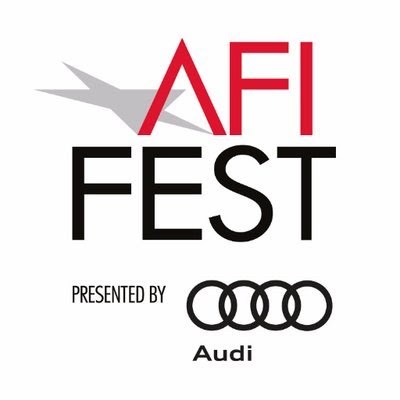
Pandemic life notoriously doesn’t come with a whole lot of perks, but here’s a big one for LA movie lovers: Since the excellent AFI Fest has been forced like most of the world’s film festivals to go virtual this year, you’ll have the unique chance over the coming week to watch some of 2020’s most exciting and awards-buzzy global cinema, all from the comfort and pants-optionality of your own home.

AFI Fest’s roster always includes strong LGBTQ representation—and this year is no exception, from an epic gay immigrant love story to the profile of a famed trans jazzman to a lesbian cinema classic. In all, this year’s festival lineup includes more than 120 titles, all screening virtually in limited scheduling windows running anywhere from a few hours to several days through the end of the festival on October 22. Screening access can be purchased individual films, or with festival-wide passes starting at $100.
Here are the LGBTQ-themed films not to miss at AFI Fest 2020:
Deftly merging narrative and documentary elements, this sweeping, tender and timely film follows the decades-long real-life love story of Ivan and Geraldo as they meet in Pueblo, Mexico, emigrate to the United States, and settle into New York City life, facing the enormous challenges and dangers of homophobia, racism and injustice along the way. A conversation with director Heidi Ewing and actor Armando Espitia follows the film.
Screening Tuesday, October 20 at 12pm to Thursday, October 22 at 11:59pm
Billy Tipton may have had five wives, but he led a relatively tame life by jazz musician standards, settling down in Spokane and even adopting three children. It wasn’t until he passed away in 1989 and it was revealed that he was a trans man that his name was splashed across national tabloid headlines. This thoughtful documentary—seen here in its American premiere, fresh from the Toronto International Film Festival—looks back on Tipton’s life with the help of keen insights from several trans men.
Screening Sunday, October 18 at 12pm to Thursday, October 22 at 11:59pm
South Carolina native Beth shares a special relationship with her “different” Uncle Frank, which only grows stronger when college brings her close to him in New York. Just as Beth is discovering Frank’s just-post-Stonewall gay world of the early 1970s, a death in the family sets them off on a road trip back to South Carolina and a reckoning with their family and their pasts. A talk with director Alan Ball and actors Paul Bettany, Peter Macdissi and Sophia Lillis follows the film.
Screening Sunday, October 18 at 12pm to Thursday, October 22 at 11:59pm
Anyone who lived in Los Angeles in the 1980s and ‘90s remembers Zoey Tur, then known as Bob, who pioneered TV helicopter journalism from high above the city alongside wife and fellow journalist Marika Gerrard, and brought us iconic footage like the start of the 1992 riots and the slow-speed chase of O.J. Simpson. This fascinating documentary looks back on the couple’s insatiable journalistic drive, which unfortunately also took a harsh toll on their marriage and family life. Following the film, their daughter Katy Tur (now a renowned correspondent and anchor herself) leads a conversation between director Matt Yoka and subject Marika Gerrard.
Screening Friday, October 16 at 12pm to Thursday, October 22 at 11:59pm
Switzerland’s official entry for this year’s International Feature Film Oscar, this graceful drama (here in its American premier) tells the story of two twins, former playwright Lisa who’s now a stay-at-home mom in a small Swiss town, and Berlin-based stage actor Sven, who’s suddenly stricken with leukemia. As they navigate the fallout from Sven’s disease, their shared passion for theater draws them even closer together.
Screening Tuesday, October 20 at 12pm to Thursday, October 22 at 11:59pm
Electronic music owes an enormous debt to its female pioneers, as revealed in this celebration of unsung innovators in technological sound like Clara Rockmore, Bebe Barron, Eliane Radigue and Pauline Oliveros, the last of whom also came out as a lesbian in the 1950s. Iconic avant-garde composer Laurie Anderson delivers the poetic narration.
Screening Saturday, October 17 at 12pm to Thursday, October 22 at 11:59pm
This lesbian movie classic from 1996 appears here as part of AFI Fest’s annual Cinema’s Legacy series, chosen by guest curator Racquel Gates this year as a film that also reframes the notion of “classic” through a Black perspective. Aspiring filmmaker Cheryl (played self-referentially by writer/director Cheryl Dunye) embarks on a documentary project about an unidentified Black actress from the 1930s and ‘40s, as she meanwhile embarks on a romance with a white woman, Diana (Guinevere Turner).
Screening Friday, October 16 ONLY from 12pm to 11:59pm; FREE
A number of LGBTQ-themed shorts are also part of this year’s AFI Fest, including CHILD OF THE LAND (about a queer 16-year-old girl navigating life on the streets after suffering abuse from her stepfather) and IN FRANCE MICHELLE IS A MAN’S NAME (about a young trans man’s return home to the rural American West following years of estrangement from his parents), both screening as part of SHORTS PROGRAM 3; as well as French trans-themed DUSTIN and lesbian coming-of-age tale PILLARS, both part of SHORTS PROGRAM 2.
2020’s AFI Fest also features a partnership with NBC’s Meet the Press that showcases a series of short documentaries, two of which have queer subjects: VOTE NEIL, which follows openly gay Marine veteran Neil Rafferty as he runs for Alabama’s State Legislature, and TALL TALES WITH TRUE QUEENS, which examines the power and controversy of drag queen story hour events.
Television
The ‘Stranger Things’ coming out scene: The reaction and the relevance
The retro nature of Stranger Things allows for revisionist history for people who survived the trauma of being in the closet during the age of AIDS and when queer people weren’t in the media.
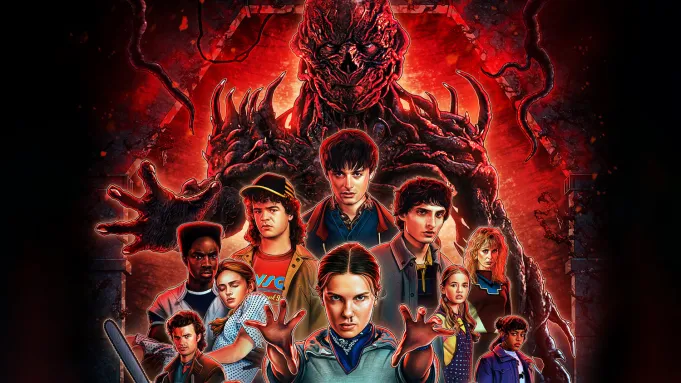
Stranger Things has become a Netflix phenomenon by combining 1980s nostalgia, Dungeons & Dragons, the sci-fi and horror geekdoms, and Winona Ryder. We’ve watched a group of childhood friends fight demigorgons and grow up over the last 9 years. The latest season featured a pivotal moment for the character of Will Byers (Noah Schnapp): he came out.
While social media has been flooded with fans’ frustration that Max made no attempts to run in the various rescue attempts from the Upside Down, and have mocked Millie Bobby Brown’s alleged post filler mug, there have been mixed reviews of the coming out scene. Some found it too long, too earnest, while others found it healing. Is it the strangest thing that the community can have such a varied reaction to this scene?
In season one, the sensitive and shyest member of this group was essentially a MacGuffin. He was kidnapped and taken to the hell dimension of the Upside Down, with the whole season centered on his return. Unlike cult fave Barb, the sensitive boy had to navigate the trauma of surviving the harrowing experience. As the show progressed, fantasy met reality as Schnapp’s sexuality became part of the series.
His unrequited crush with his friend Mike Wheeler (Finn Wolfhard) began driving narrative tension. In the final season, an impromptu and lengthy coming out scene drove part of the war between the teens and Vecna (Jamie Campbell Bower) and the Mind Flayer.
While the pacing can seem a bit strange, with a ten-minute coming-out scene on the cusp of the final battle, there is still the matter of the context of the 1980s and being queer. Also, rather than the perfunctory, “we’ve got a queer character, let’s have them come out,” this scene fundamentally factored into the narrative of the show.
This season found Will having his own Dark Phoenix moment, taking on multiple demigorgons. He is also confronted by Vecna, exposing the shame, embarrassment, and darkness of his suppressed queer feelings. His coming out was not only necessary for Will’s character but also for the success in defeating the main antagonist.
Throughout television history, child actors have started as precocious sources of comic relief and memorable lines, but as their queerness presented itself, it changed the show. Danny Pintauro on Who’s the Boss was phased out of his sitcom as he got older. Mark Indelicato on Ugly Betty essentially provided a queer element, and his coming out was factored into the series as he got older.
While the scene may have stalled some of the action, it has more to do with the fact that the series was not released in 8 episodes but released in three chunks, with the last two episodes as one 2-hour spectacular.
The pacing issues with the 5th season have nothing to do with Will’s sexuality. After all, Max managed to perp walk her way through the Upside Down and had time to conduct a whole pep talk for Holly Wheeler.
While some younger folks may find the scene corny or cringeworthy, the context of this scene is vital. Being set in the 1980s puts it in a different context. Being gay in the early 1980s was a whole thing unto itself. The idea that a character could be honest about being gay and find everyone in his life supporting him can be healing.
It also honors the unique coming-of-age moments of queer people. Will Byers’s sexuality is not just something to make his character interesting. Instead, it’s honoring the actor, putting it in a context, and making a queer person a prominent part of the story.
As the quantity of queer characters on screen is decreasing, it doesn’t seem like a coincidence that the quality is getting better. The timing of Heated Rivalry, Boots, and this scene, all while the political climate for LGBTQ people is in turmoil, offers a shot in the arm for queer people and a call for us to honor our shared experiences rather than focus on our differences.
The retro nature of Stranger Things allows for revisionist history for people who survived the trauma of being in the closet during the age of AIDS and when queer people weren’t in the media.
Stranger Things choosing to not just honor their star’s queer identity, but also having the full reality of a queer person’s life factor into the narrative seems like progress. Will doesn’t come out because he’s gay. He comes out because he cannot survive his secrets when facing a psychic demon from a mirror dimension.
The show isn’t some schmaltzy story about a queer teen in the closet and his inevitable coming out. Instead, Will is a kidnapping survivor with superpowers, set on vengeance for the creature that kidnapped him, and just so happens to have to come out to succeed.
So now what? What is the future for queer characters, and how will more showrunners treat queer characters in the future?
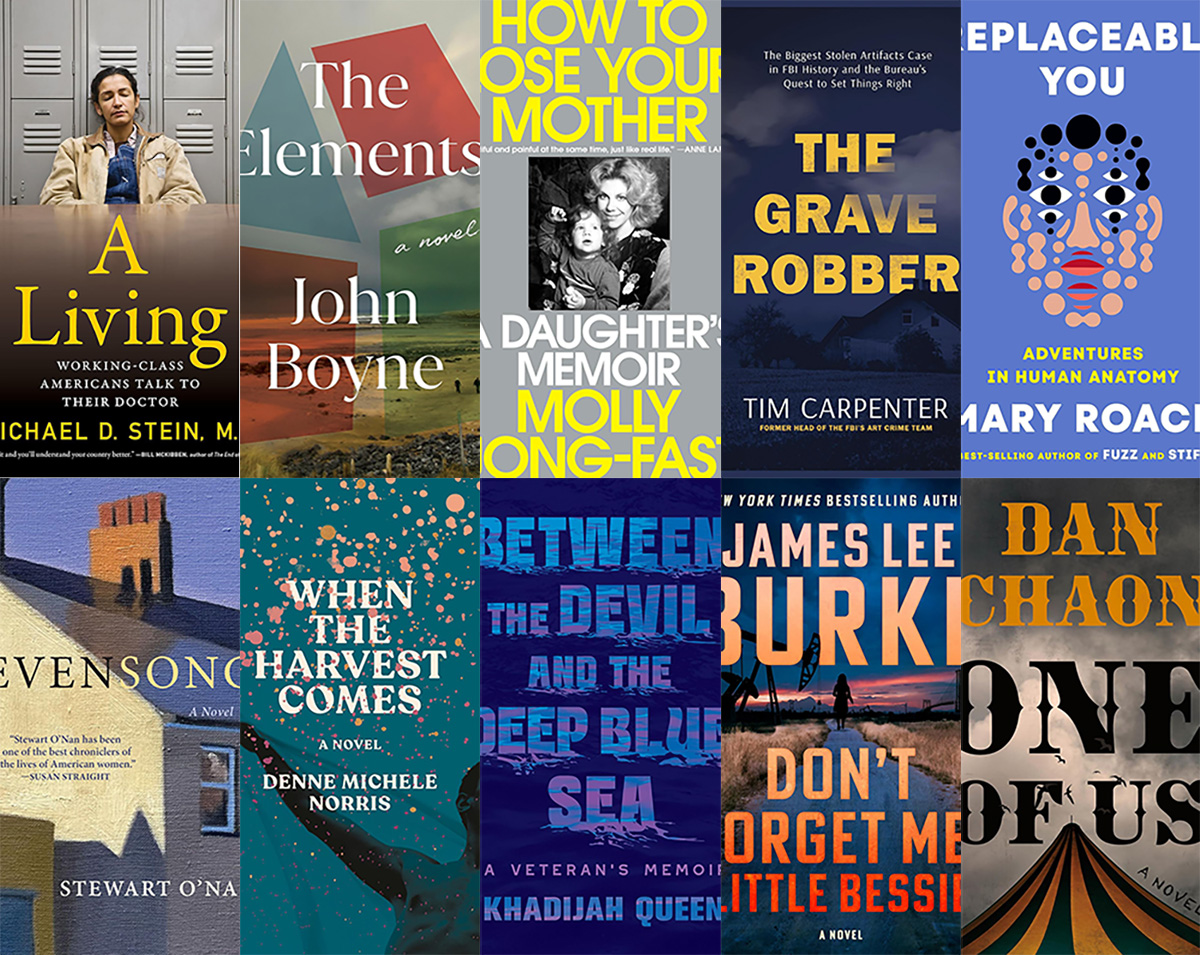
This past year, you’ve often had to make do.
Saving money here, resources there, being inventive and innovative. It’s a talent you’ve honed, but isn’t it time to have the best? Yep, so grab these Ten Best of 2025 books for your new year pleasures.
Nonfiction
Health care is on everyone’s mind now, and “A Living: Working-Class Americans Talk to Their Doctor” by Michael D. Stein, M.D. (Melville House, $26.99) lets you peek into health care from the point of view of a doctor who treats “front-line workers” and those who experience poverty and homelessness. It’s shocking, an eye-opening book, a skinny, quick-to-read one that needs to be read now.
If you’ve been doing eldercare or caring for any loved one, then “How to Lose Your Mother: A Daughter’s Memoir” by Molly Jong-Fast (Viking, $28) needs to be in your plans for the coming year. It’s a memoir, but also a biography of Jong-Fast’s mother, Erica Jong, and the story of love, illness, and living through the chaos of serious disease with humor and grace. You’ll like this book especially if you were a fan of the author’s late mother.
Another memoir you can’t miss this year is “Between the Devil and the Deep Blue Sea: A Veteran’s Memoir” by Khadijah Queen (Legacy Lit, $30.00). It’s the story of one woman’s determination to get out of poverty and get an education, and to keep her head above water while she goes below water by joining the U.S. Navy. This is a story that will keep you glued to your seat, all the way through.
Self-improvement is something you might think about tackling in the new year, and “Replaceable You: Adventures in Human Anatomy” by Mary Roach (W.W. Norton & Company, $28.99) is a lighthearted – yet real and informative – look at the things inside and outside your body that can be replaced or changed. New nose job? Transplant, new dental work? Learn how you can become the Bionic Person in real life, and laugh while you’re doing it.
The science lover inside you will want to read “The Grave Robber: The Biggest Stolen Artifacts Case in FBI History and the Bureau’s Quest to Set Things Right” by Tim Carpenter (Harper Horizon, $29.99). A history lover will also want it, as will anyone with a craving for true crime, memoir, FBI procedural books, and travel books. It’s the story of a man who spent his life stealing objects from graves around the world, and an FBI agent’s obsession with securing the objects and returning them. It’s a fascinating read, with just a little bit of gruesome thrown in for fun.
Fiction
Speaking of a little bit of scariness, “Don’t Forget Me, Little Bessie” by James Lee Burke (Atlantic Monthly Press, $28) is the story of a girl named Bessie and her involvement with a cloven-hooved being who dogs her all her life. Set in still-wild south Texas, it’s a little bit western, part paranormal, and completely full of enjoyment.
“Evensong” by Stewart O’Nan (Atlantic Monthly Press, $28) is a layered novel of women’s friendships as they age together and support one another. The characters are warm and funny, there are a few times when your heart will sit in your throat, and you won’t be sorry you read it. It’s just plain irresistible.
If you need a dark tale for what’s left of a dark winter season, then “One of Us” by Dan Chaon (Henry Holt, $28), it it. It’s the story of twins who become orphaned when their Mama dies, ending up with a man who owns a traveling freak show, and who promises to care for them. But they can’t ever forget that a nefarious con man is looking for them; those kids can talk to one another without saying a word, and he’s going to make lots of money off them. This is a sharp, clever novel that fans of the “circus” genre shouldn’t miss.
“When the Harvest Comes” by Denne Michele Norris (Random House, $28) is a wonderful romance, a boy-meets-boy with a little spice and a lot of strife. Davis loves Everett but as their wedding day draws near, doubts begin to creep in. There’s homophobia on both sides of their families, and no small amount of racism. Beware that there’s some light explicitness in this book, but if you love a good love story, you’ll love this.
Another layered tale you’ll enjoy is “The Elements” by John Boyne (Henry Holt, $29.99), a twisty bunch of short stories that connect in a series of arcs that begin on an island near Dublin. It’s about love, death, revenge, and horror, a little like The Twilight Zone, but without the paranormal. You won’t want to put down, so be warned.
If you need more ideas, head to your local library or bookstore and ask the staff there for their favorite reads of 2025. They’ll fill your book bag and your new year with goodness.
Season’s readings!
The Blade may receive commissions from qualifying purchases made via this post.
Tarot Readings and Astrology
January is calling for us to be grown-ups in Intuitive Shana’s New Year tarot reading
We need to look at our goals and make them clear, simple, and in tune with our empowerment.
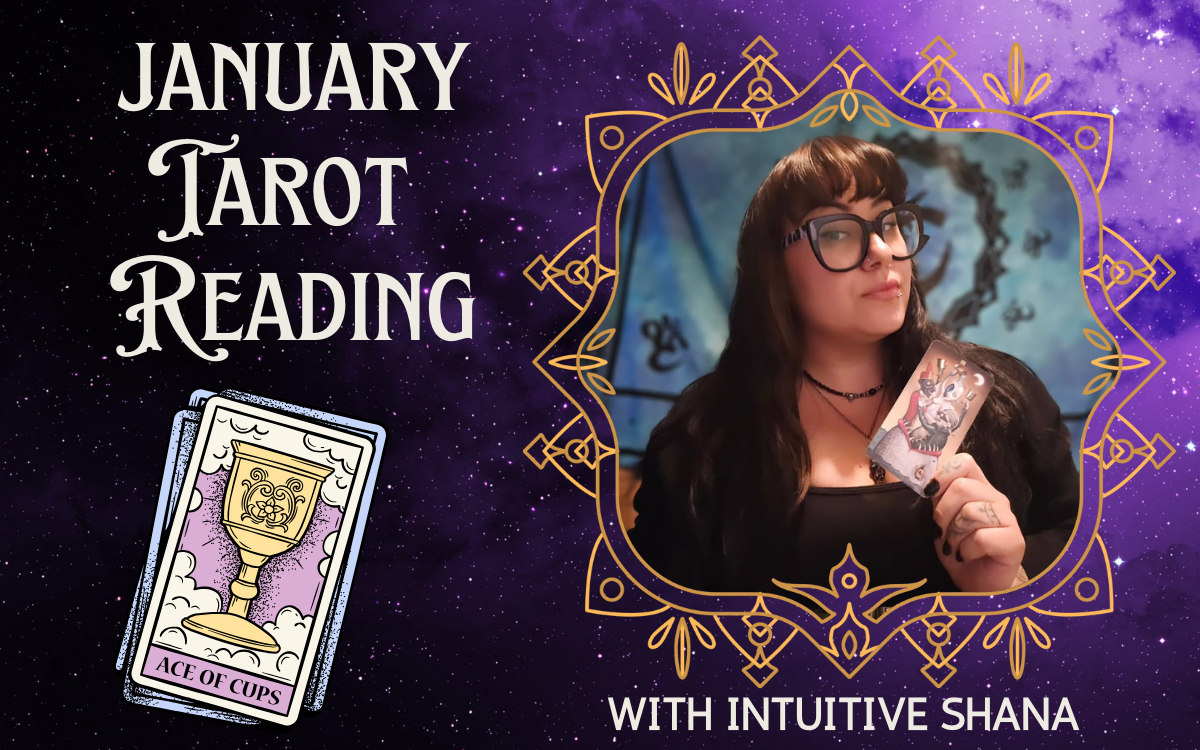
Happy 2026, my lovies!
I hope this year is one that sprinkles love, stability, and power into your life, no matter where you are or what you’re going through. I always like to start my year off by cleansing and cleaning my space. I see it as a way of clearing out the energetic and material junk that has accumulated in my life throughout the previous year. So grab your Swiffer and some sage (or whichever herb is sacred in your life and practice) and get to work!
After your space is nice and clean, take a salt bath (and if you feel like there’s some extra ick on you, throw in some rosemary or bay leaves) and cleanse yourself as well. Finish this simple ritual off by taking a bite of something sweet or making the sign of the cross on your tongue with honey to invite sweetness into the coming year and consider the year enchanted from the start!
January is urging us to be strategic. Take your New Year’s resolution one step further than going to the gym a handful of times before getting distracted, or the promise of saving money that all but disappears when we see a sale pop up at our favorite spot on Melrose. We need to look at our goals and make them clear, simple, and in tune with our empowerment.
We are living and growing in a rapidly changing world, which means we need to take a look around us and consider what life will most likely look like over the next 6–12 months. That can seem scary, I know, but knowledge is power. When we arm ourselves with that power, we can set up game plans A, B, and C and know that our goals can and will be achieved, even if our plan of execution is subject to change. So map out a quarterly plan for how you’re living life in 2026 and revisit it often…preferably under the full moon with some candles and herbs that help keep things on track. (Remember, a little magic can take us a long way when we’re trying to get things done.)
I’m seeing that some folks are healing old wounds, especially mother wounds (as cliché as it sounds), that have recently been reopened or revisited. Healing is difficult and requires us to move through painful moments, but it is worth facing so you can process whatever trauma has been living rent-free in your mind or heart and move forward with your life. I’d like to remind you that healing isn’t linear; it’s more of a tango. You’ll take a few steps forward and a few steps back. If you lean into the healing journey that’s been nagging at you, you may find that January is a bit of an emotional rollercoaster, but one that does have an ending, and that ending is beautiful and peaceful, my friend.
I know we’ve covered some of the heavier elements of the month, but I do have lighter news for you as well! This month brings open roads and possibilities, especially those involving contracts. If you’re dealing with a court case, officially landing a new role, or trying to close a big sale, January looks promising. Make sure you keep everything above board and in writing to protect your success.
As exciting as your good news may be, keep it to yourself until the deal is 100% sealed. We don’t need someone getting jealous of what you’ve got going on and accidentally (or on purpose) throwing the evil eye your way. Keep your lips closed, and wear an evil eye, a piece of red coral, or black tourmaline can help keep bad vibes away while you work your magic and get down to business.
January is calling for us to be grown-ups. It’s asking us to make plans and stick to them, work on our emotional health, and put our game faces on. I know, it’s a lot, especially since so many of us are just trying to get back into the swing of things after the holidays. Just know that hard work gets sweetly rewarded, too.
Happy January, and happy 2026, everyone!
Shana is an initiated priestess, paranormal investigator, author, and host of the podcast Queer from the Other Side. Follow Shana on IG.
Movies
The 25 greatest queer movies of the 21st century so far
‘Moonlight,’ ‘Brokeback,’ ‘Carol,’ among highlights

There’s something about a calendar milestone that seems to demand the making of lists.
Whether it’s a list of resolutions for the future or a list of high points for the past, we are happy to oblige – so as we move past the first quarter of our current century, here’s our list of the top 25 queer films since the end of the last one, listed in order of their release, and chosen through a blended consideration of overall critical consensus, cultural impact, and yes, individual tastes.
Our favorites might not be the same as yours, because taste is always subjective, so look at this as an inspiration to celebrate yours by making a list of your own.
Hedwig and the Angry Inch (2001)
John Cameron Mitchell’s screen adaptation of his own genderqueer musical about a third-rate rock singer with a botched sex-change made his jubilantly rebellious off-Broadway hit accessible to uncountable queer audiences for whom its comically-tortured pseudo-autobiographical tale of empowerment through rebellious self-expression felt like “being seen,” and the rest is history.
Mulholland Drive (2021)
Late revered auteur David Lynch’s neo-noir Hollywood mystery – delivered in his famously incomprehensible style – is also a film that strongly centers a same-sex love affair between naive Hollywood-hopeful actress (Naomi Watts) and the darker, more worldly woman (Laura Herring) with whom she becomes entangled. While their relationship may transmute throughout Lynch’s hallucinatory narrative, it remains the unequivocal emotional core of the film.
Bad Education (2004)
Renowned queer Spanish filmmaker Pedro Almodóvar scored a career high point with this boldly imaginative cinematic melodrama in which a gay film director (Fele Martínez) is reunited with a friend and lover (Gael García Bernal) from boarding school, who has written a script based on the story of their youthful relationship. A breathtaking exploration of a story’s evolution through many retellings – and of cinema’s power to illuminate the human truth behind it.
Brokeback Mountain (2005)
What can we say that hasn’t already been said? Ang Lee’s exquisitely heart-rending adaptation of Anne Proulx’s tale of two cowboys in love smashed open doors for queer storytelling in “mainstream” cinema and perfectly captured the agony of impossible longing that so many people in the rainbow community know all too well. Heath Ledger and Jake Gyllenhaal will forever be the litmus test for true allyship, thanks to their fearless commitment to the validity of a love that simply can’t be “quit.”
Shortbus (2006)
John Cameron Mitchell makes a second appearance on our list for directing this controversial, groundbreaking dramedy featuring intertwined love stories – queer and otherwise – around an underground Manhattan “salon” hosted by Justin Vivian Bond. Featuring explicit scenes of un-simulated sex in a gently satirical commentary on the struggle to connect in a post-millennial world, it pushed boundaries while also validating an open view toward sexuality, relationships, and identity itself.
Pariah (2011)
Dee Rees’s drama about a Black lesbian teen (Adepero Oduye) coming to terms with her identity was a landmark of representation, amplifying both the struggle of queer people facing homophobia from within their own community and the self-empowerment that comes with embracing who you are.
Weekend (2011)
Gay British filmmaker Andrew Haigh made an impressive breakthrough with this romance about two gay Londoners (Tom Cullen and Chris New) who fall in love during a one-night stand, filmed with a mix of scripted structure and improvised performance to capture an eminently relatable queer portrait of the kind of fleeting connection that stays with us for a lifetime.
Stranger by the Lake (2013)
This erotic thriller from French filmmaker Alain Guiraudie channels Hitchcock at his most perverse for its story of a “cruiser” at a nude gay lakeside beach (Pierre Deladonchamps) who becomes infatuated with a man who may or may not be a serial murderer (Christophe Paou). Scary, sexy, and utterly hypnotic, there’s a reason it’s frequently named as one of the best queer horror films of all time.
Carol (2015)
Iconic queer filmmaker Todd Haynes has scored several hits this century, but most impactful of all is his adaptation of Patricia Highsmith’s midcentury lesbian romance between a married woman (Cate Blanchett) and a shopgirl (Rooney Mara), which breaks radical ground by imagining the possibility of a happy ending for queer love in an era that represses it.
Tangerine (2015)
Future “Anora” Oscar-winner Sean Baker made his breakthrough with this gritty, iPhone-filmed dramedy about two trans sex workers on an all-night quest in the streets of Hollywood. Shot on iconic location and boasting the raw authenticity of real-life trans performers Kitana Kiki Rodriguez and Mya Taylor, each of whom knew the “streetlife” of the movie firsthand, it represented a huge advancement in the way trans stories were depicted onscreen while revolutionizing the independent film scene with its DIY audacity.
Moonlight (2016)
Barry Jenkins’ adaptation of Tarell McCraney’s play about a closeted young Black man growing up in the crack-blighted projects of Miami became a landmark of queer cinema by winning the Best Picture Oscar, but its real accomplishment lies in its three-act depiction of coming to terms with queer sexuality in an environment of social disadvantage, entrenched homophobia, and limited opportunity for escape. An unequivocal masterpiece.
BPM (Beats per Minute) (2017)
French filmmaker Robin Campanello crafted this urgently contemporary historical drama about AIDS activism of the 1990s, based on his own real-life experiences as a member of the Parisian chapter of ACT UP, and the result is a thrilling portrait of shared community commitment – and heartbreak – that feels like the most powerful documentary you’ve ever seen.
Call Me by Your Name (2017)
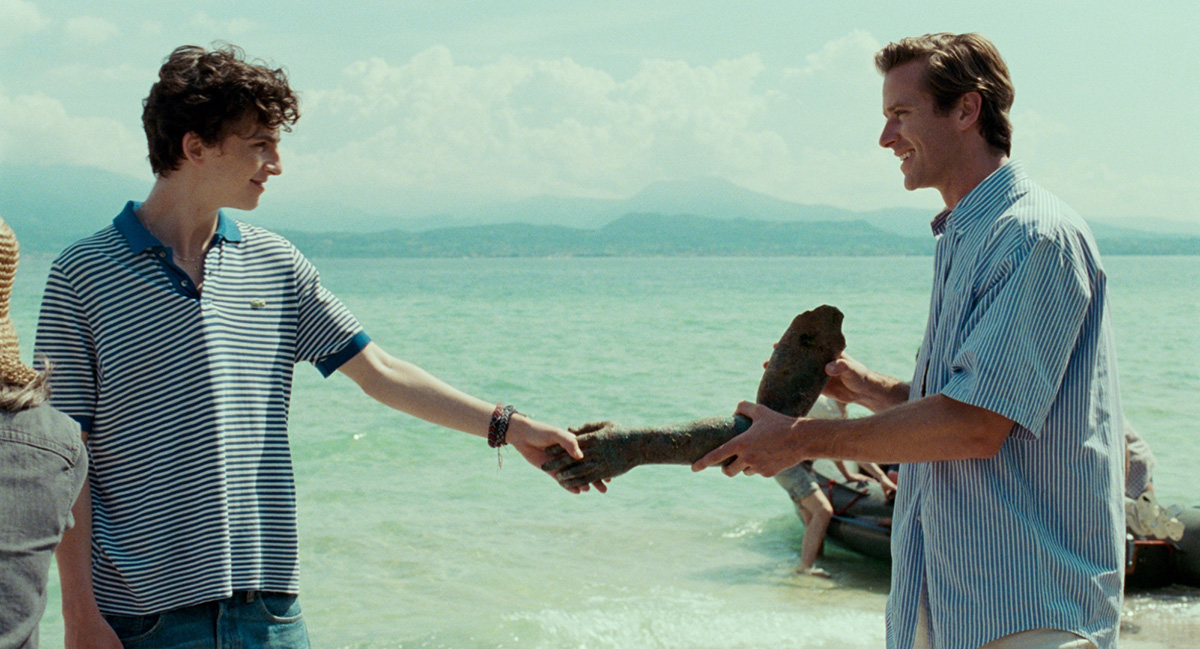
Luca Guadagnino’s coming-of-age romance between a teen boy (an incandescent Timothée Chalamet) and his father’s grad student assistant (Armie Hammer) in Tuscany of the early 1980s may have sparked some controversy over the supposed inappropriateness of the age gap between its onscreen lovers and later revelations about Hammer’s real-life inclinations, but this James Ivory-scripted distillation of the pangs of first queer love transcends all that to become an irresistibly potent masterwork – and touchstone – that gives eloquent voice to both a sense of queer longing and a spirit of pastoral bliss that we all know will always be too good to last.
God’s Own Country (2017)
Often (and perhaps unfairly) characterized as a sort of companion piece to “Brokeback Mountain,” this first directorial effort by UK filmmaker Francis Lee depicts a romance between a young sheep farmer (Josh O’Connor) and the Romanian immigrant worker (Alec Secăreanu) he hires to help him after his father is sidelined by a stroke. In this case, however, the obstacles to their union come from internalized homophobia, not from outside judgments, and the trope of an unhappy ending for queer lovers is – tentatively, at least – rejected for a palpable sense of hope. It’s a small shift, perhaps, but the impact is huge.
The Favourite (2018)
Greek absurdist filmmaker Yorgos Lanthomos won accolades for this historical drama about lesbian power struggles in the 18th-century court of Britain’s Queen Anne (Oscar-winner Olivia Colman), who plays two would-be mistresses (Emma Stone and Rachel Weisz) against each other in a Machiavellian competition for royal favor and the power that goes with it. Consistently appalling and frequently grotesque in its portrait of weaponized proximity to power, it’s as uncomfortably funny as it is radically feminist in its portrayal of forced female enmity in a society still governed by masculine standards, even when a woman holds the dominant position.
Portrait of a Lady on Fire (2018)
This French historical drama from Céline Sciamma might seem at first glance as if it were merely another iteration of the period lesbian romance that has become almost a cliche, but it transcends the tropes to assert a message of feminist rebellion against the male-dominated societal norms – magnified by its 18th century setting – which would dismiss and devalue the inner experience of women, and leaves us all wanting to see “The Patriarchy” burned to the ground.
Neptune Frost (2021)
In this singularly genre-defying musical romance from Saul Williams and Anisia Uzeyman, magical Afrofuturist realism collides with dystopian tech-driven sci-fi for a story of romance between an intersex refugee from Burundi (Cheryl Isheja/ Elvis Ngabo) and a rebellious coltan miner (Bertrand “Kaya Free” Ninteretse), blending elements of cosmic spirituality with brutally oppressive political reality to create a visually striking modern-day myth, rooted in African tradition, that incorporates the struggle for queer identity into a larger battle against suppression and domination by a shadowy over-class concerned only with power and profit. Palpably weird and unrepentantly radical, it speaks – and sings – truth to power in a way that most modern films could simply never imagine.
Everything Everywhere All at Once (2022)
This multi-Oscar-winning surprise hit from the filmmaking team known collectively as “The Daniels” (Kwan and Schwienert are their real-life surnames) might be a brilliantly absurdist action comedy about a war for the fate of the multiverse, but it’s built around the struggle of an Asian-American mother (Michelle Yeoh) to reconcile her strained relationship with her queer daughter (Stephanie Hsu) and come to terms with her disillusionment over her devoted but seemingly incompetent husband (Ke Huy Quan) – all while negotiating her tax returns with a no-nonsense IRS agent (Jamie Lee Curtis) who may have been her lesbian lover in another reality. It might take a collective effort from dozens of alternative timelines, but the fight is definitely worth it, in the end.
Fire Island (2022)
Director Andrew Ahn teamed with writer/star Joel Kim Booster for this modernized gay adaptation of “Pride and Prejudice” in which Jane Austen’s 19th-century social commentary is reframed in the world of queer culture, highlighting the class differences between economic and social status and amplifying the experience of queer Asian-American males in the predominantly white-centric queer heirarchy of the contemporary age. It sounds like a stretch, but it’s a more authentically heartfelt – and unapologetically intelligent – queer romcom than the much-touted “Bros,” which debuted the same year to a dishearteningly meager box office take.
Tar (2022)
Acclaimed Kubrick protege Mike Field’s third movie is this ethically challenging drama starring Cate Blanchett as a renowned lesbian conductor targeted by “cancel culture” over her history of predatory sexual misconduct. An alternately bemusing and horrifying portrait of toxic behavior and a world more interested in passing judgment than addressing inequities, it’s an uncompromisingly detached cautionary tale about female power in a world still governed by patriarchal standards, with Blanchett’s flawless performance as the glue that holds it all together.
All of Us Strangers (2023) Andrew Haigh makes a second appearance on our list as writer/director of this haunting adaptation of a novel by Japanese author Taichi Yamada, in which a lonely screenwriter (Andrew Scott) revisits his childhood home to commune with his long-dead parents (Jamie Bell, Claire Foy) while navigating a tentative new relationship with a melancholy neighbor (Paul Mescal) in his strangely deserted apartment building. Part ghost story, part melancholy romance, and all about the exploration of queer isolation and lingering childhood trauma, it’s an unexpectedly uplifting love story with supernatural overtones that render it into the stuff of mystical poetry. An essential queer classic, right out of the box.
I Saw the TV Glow (2024)
As queer cinema continues to struggle with the challenge of bringing trans stories to the big screen in the face of political pushback from transphobic culture warriors, filmmaker Jane Schoenbrun has bravely pushed forward, and this – her second feature – achieves full-on cinematic greatness, delivering a trans allegory in the shape of a disquieting horror movie about former teen schoolmates (Justice Smith and Jack Haven) haunted by phantom memories of a favorite TV show from their past. Capped with a final sequence that drives home the despair of living a life of pretense against your own inner truth, it’s a surreal and devastatingly immediate fantasia on themes of gender, sexuality, and conformity, but also an indictment against the outright erasure of trans identity in a world that would rather pretend it never existed in the first place.
Love Lies Bleeding (2024)
Rose Glass’s lesbian neo-noir thriller teams queer icon Kristen Stewart with Katy O’Brien for a twisted love story between the daughter of a small-town crime boss and an aspiring steroid-addled bodybuilder which takes them both on a harrowing road of violence and terrible choices yet keeps us pulling for their union every step of the way. A slice of deliberate B-movie exploitation cinema at its most elevated, it embraces its generic camp to achieve a deeply satisfying spirit of rebellion that leaves us all calling for an end to the patriarchy, right now.
The Visitor (2024)
Underground filmmaker and “queercore” pioneer Bruce La Bruce has a long history of creating brilliant countercultural cinema underneath the mainstream radar, but he finds his way onto our list via his audacious remake of Pier Paolo Pasolini’s “Terorema,” in which a mysterious and sexually fluid stranger destroys a dissolute bourgeois household by seducing each of them – from father and mother to son, daughter, and maid – in turn. Reset into contemporary England and informed by a xenophobic fear of the “other,” it doubles down on Pasolini’s sociopolitical statement while upping the ante with transgressive scenes of un-simulated sex. The result is an unforgettable excursion into radical queer expression that fearlessly exposes the hypocrisies of so-called “straight” society while fostering an “eat the rich” attitude of sexual rebellion that has yet to be matched by any filmmaker working within “the system.”
The History of Sound (2025)
South African filmmaker Oliver Hermanus has made a number of passionate queer films during his career, but this WWI-era romantic drama about two music scholars (Paul Mescal and Josh O’Connor). who fall in love while gathering folk songs in rural New England, surpasses his earlier triumphs by offering up a bittersweet-but-transcendent meditation on the power of music to preserve and immortalize the struggles and hardships of each generation, as humans – queer or otherwise – strive to find happiness in the proscribed limitations of their lives. Yes, it’s tragic; but thanks to the exceptional tenderness between its two stars and the compassion with which Hermanus extends to them, it leaves us with the memory of the good things while offering hope for a future that gives us – at long last – the freedom to be who we are.
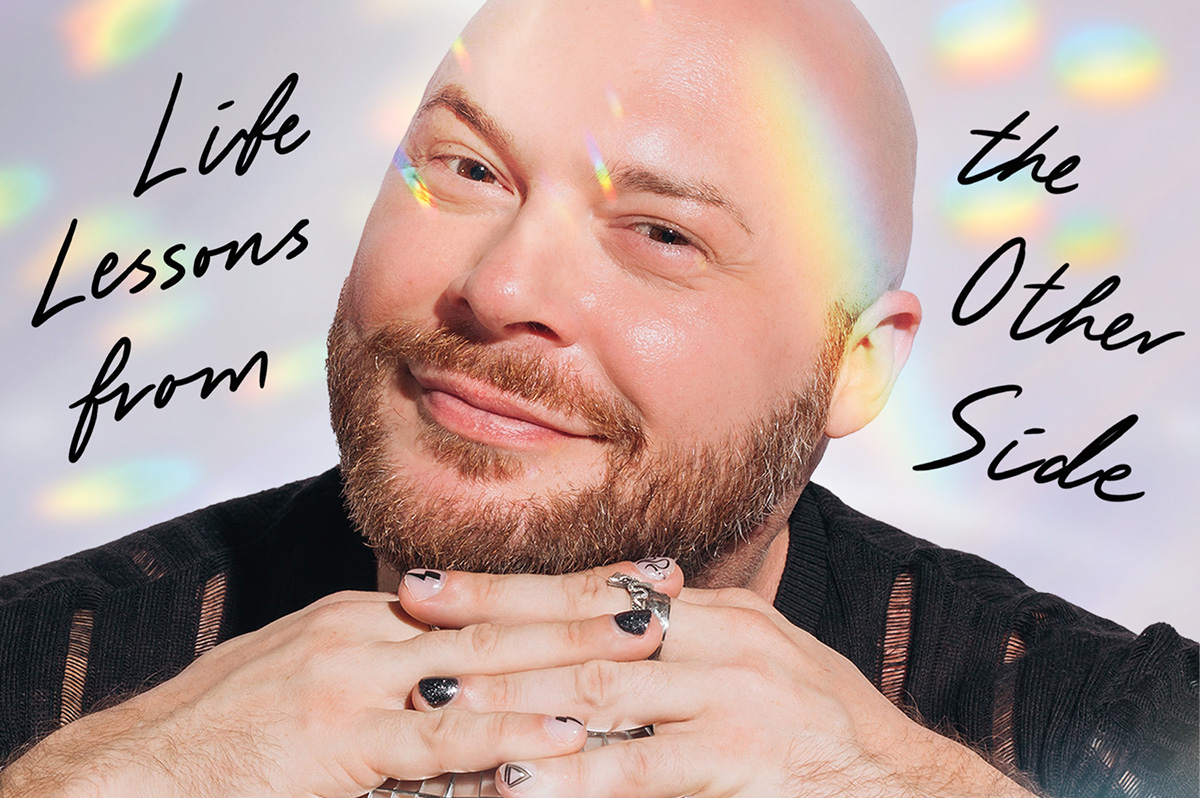
‘Are You There Spirit? It’s Me, Travis’
By Travis Holp
c.2025, Spiegel and Grau
$28/240 pages
Your dad sent you a penny the other day, minted in his birth year.
They say pennies from heaven are a sign of some sort, and that makes sense: You’ve been thinking about him a lot lately. Some might scoff, but the idea that a lost loved one is trying to tell you he’s OK is comforting. So read the new book “Are You There, Spirit? It’s Me, Travis” by Travis Holp, and keep your eyes open.

Ever since he was a young boy growing up just outside Dayton, Ohio, Travis Holp wanted to be a writer. He also wanted to say that he was gay but his conservative parents believed his gayness was some sort of phase. That, and bullying made him hide who he was.
He also had to hide his nascent ability to communicate with people who had died, through an entity he calls “Spirit.” Eventually, though it left him with psychological scars and a drinking problem he’s since overcome, Holp was finally able to talk about his gayness and reveal his otherworldly ability.
Getting some people to believe that he speaks to the dead is still a tall order. Spirit helps naysayers, as well as Holp himself.
Spirit, he says, isn’t a person or an essence; Spirit is love. Spirit is a conduit of healing and energy, speaking through Holp in symbolic messages, feelings, and through synchronistic events. For example, Holp says coincidences are not coincidental; they’re ways for loved ones to convey messages of healing and energy.
To tap into your own healing Spirit, Holp says to trust yourself when you think you’ve received a healing message. Ignore your ego, but listen to your inner voice. Remember that Spirit won’t work on any fixed timeline, and its only purpose is to exist.
And keep in mind that “anything is possible because you are an unlimited being.”
You’re going to want very much to like “Are You There, Spirit? It’s Me, Travis.” The cover photo of author Travis Holp will make you smile. Alas, what you’ll find in here is hard to read, not due to content but for lack of focus.
What’s inside this book is scattered and repetitious. Love, energy, healing, faith, and fear are words that are used often – so often, in fact, that many pages feel like they’ve been recycled, or like you’ve entered a time warp that moves you backward, page-wise. Yes, there are uplifting accounts of readings that Holp has done with clients here, and they’re exciting but there are too few of them. When you find them, you’ll love them. They may make you cry. They’re exactly what you need, if you grieve. Just not enough.
This isn’t a terrible book, but its audience might be narrow. It absolutely needs more stories, less sentiment; more tales, less transcendence and if that’s your aim, go elsewhere. But if your soul cries for comfort after loss, “Are You There, Spirit? It’s Me, Travis” might still make sense.
The Blade may receive commissions from qualifying purchases made via this post.
Movies
Long-awaited ‘Pillion’ surpasses the sexy buzz
A film to admire from a promising new queer director
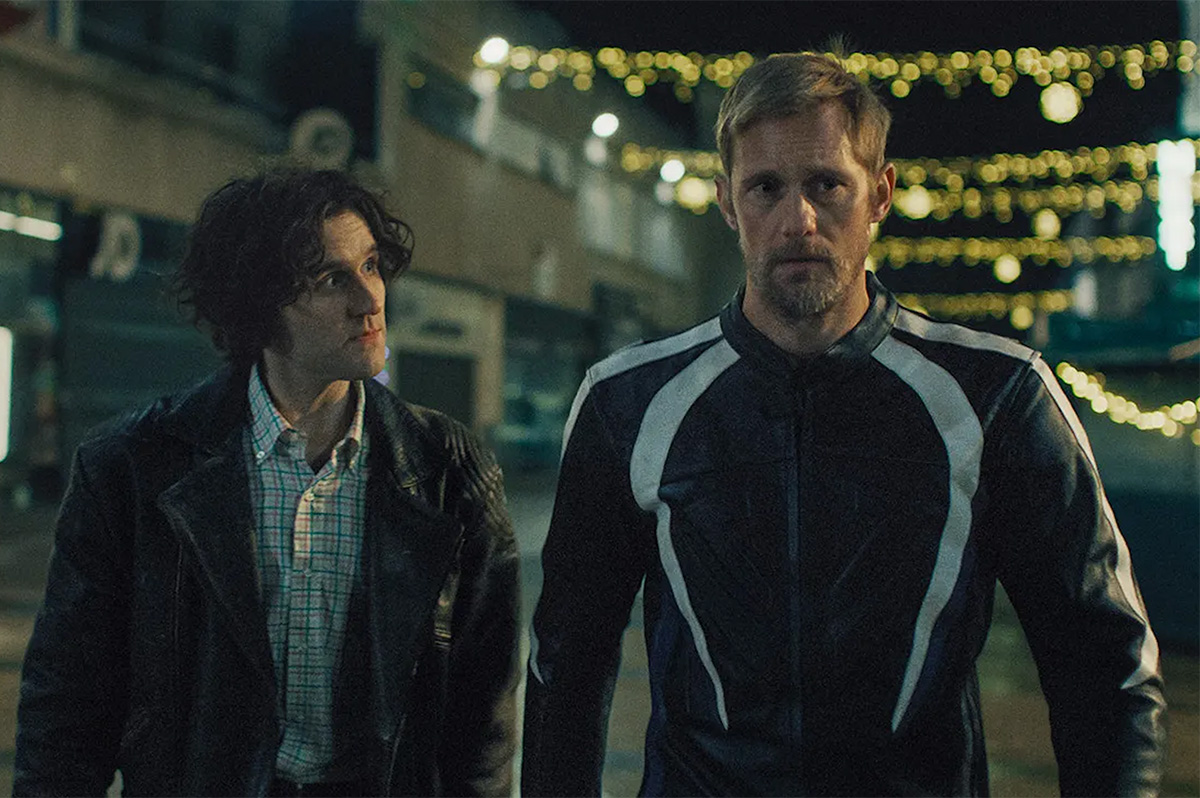
In case you didn’t know, “Pillion” – the title of debut UK filmmaker Harry Lighton’s buzzy gay “fetish rom-com” starring Scandinavian hunk Alexander Skarsgård and “Harry Potter” alumnus Harry Melling – refers to a rear seat on a motorcycle for a passenger, and the person who occupies it is said to be “riding pillion.”
That definition might be useful going into the movie’s story of an introverted gay Londoner who becomes involved with a handsome but icy biker and is introduced to the subculture of Dom/sub relationships, in that it evokes a dynamic that might be said to reflect the one that exists between its two main characters. There is nothing about Lighton’s disarmingly humorous and surprisingly sweet film, however, that seems to imply an interest in offering pat explanations or easy value judgments about the lifestyle it explores, so to think its title is meant as some kind of summation would be a mistake.
It centers on Colin (Melling), a timid parking warden who still lives with his mom and dad (Lesley Sharp and Douglas Hodge) and sings with a barbershop quartet as a hobby. After a gig singing Christmas carols at a gay bar, he catches the eye of sleekly confident Ray (Skarsgård), who gives him his phone number after a brief and thrillingly intimidating interaction. Prompted by his parents, he decides to call, leading to a steamy hookup in a back alley – and eventually, a live-in BDSM situation in which he becomes Ray’s official “sub,” catering to his every need and becoming a member of the gay biker community to which he belongs. It’s all perfectly fine with Colin, who embraces his role with pleasure; but when he begins to long for a deeper connection with the enigmatic and emotionally distant Ray, it triggers a disruption in the dynamic of their relationship, putting it to a test it may not be able to pass.
“Pillion” was already creating a stir before its prize-winning debut at the Cannes Film Festival last May, largely thanks to the highly publicized casting of Skarsgård as the leather-clad leading man in a gay BDSM romance. But near-universal critical acclaim quickly validated the buzz, turning it into one of 2025’s most anticipated movie releases – particularly, of course, for gay audiences, and especially for those who are part of the BDSM community and rarely get the opportunity to be “seen” on the screen as anything other than a lazy stereotype.
Naturally, much of that buzz has been driven by a prurient fervor, fueled by the promise of kinky onscreen sex and rumors of a notorious close-up highlighting the full-frontal assets of a certain Swedish movie star. One of the things that’s remarkable about “Pillion,” however, is that while it certainly doesn’t downplay the overt sexual aspect of the relationship at its center, it doesn’t use them to titillate or shock us. Its plentiful scenes of intimacy are sexy, yes, but they also chart the development of the characters’ bond together, expressing feelings that can only be left unspoken within their agreed-on dynamic. They advance both the story and our awareness of the characters’ psychology, and while they may occasionally provide a jolt for viewers not accustomed to seeing gay fetish sex portrayed explicitly on screen, they successfully capture the joy of the experience instead of making it feel sensationalized or lurid.
In fact, once “Pillion” ends, it’s not the sex (not exclusively, at least) that lingers in our mind; it’s the delicate balance it maintains between tension and ease, detachment and tenderness, rigidity and flow – mirroring the surging passions contained within the strictly regimented order of their power dynamic. It’s the depth of Melling’s film-anchoring performance, in which he undergoes an entire voyage of discovery that emphasizes Colin’s strength, not his timidity, and allows us to relate to him in ways that may surprise us. It’s the authenticity of the relationships between all the characters, from Sharp and Hodge’s doting parents to Scissor Sisters front man Jake Shears (in his film acting debut) as a fellow sub who ignites a spark of jealousy between Colin and Ray; most of all, it’s the way that it allows the story to move, with a slow and methodical rhythm – reflected in the measured strains of Eric Satie’s “Gymnopode No.1” that echo through Oliver Coates’ evocative score – that makes it all feel perfectly natural.
And yes, it’s also the presence of Skarsgård, who subtly (and with wry humor) contrasts tight-lipped alpha stoicism with his flawless male beauty that feels like a force of nature. We don’t know much about Ray, ever, through the dialogue in Lighton’s tersely worded screenplay, but we can draw our own conclusions from the eloquent silence that Skarsgård wraps around the character like a security blanket. Best of all, he never uses his “Dom” role in the film to overshadow Melling – it’s Colin’s story, after all, and Skarsgård’s Ray deploys a tactic of “quiet command” on him throughout without ever stealing his spotlight.
As for the film’s writer/director, Lighton manages perhaps the most delicate balancing act of all. He takes a story (adapted from a novel by Adam Mars-Jones) about someone discovering himself in the BDSM community, who engages in sexual behavior that’s likely out of the comfort zone of many viewers and enters a “romantic” partnership most people would find unacceptable, and turns it into a movie that is all about the complexities of human experience. You may not know much (or want to) about life as a sub in a BDSM partnership, but you know what it feels like to love someone, and to long for love in return; Lighton understands that “Pillion” is a story about that, and he knows how to tell it so that you will understand it, too.
That said, it’s obvious there will be many audiences out there for whom a movie about leather-clad queer fetish sex might simply be a step too far for them to take. Anyone approaching “Pillion” should be aware that, depending on your own level of familiarity – or comfort – with the BDSM lifestyle, your reaction may be vary across a spectrum of perspectives; if you’ve been around it, nothing the movie shows you is likely to ruffle your feathers, and if you haven’t, well, only you know your limits.
For us, it’s a film to admire from a promising new queer director, shining a light on an insular culture within the larger rainbow community with intelligence, dignity, and a refreshing lack of the homophobic tropes that so often haunt queer movies, when they are made by queer filmmakers themselves.
Unfortunately for Americans, while “Pillion” was released in the UK on Nov. 28, we won’t get a chance to see it until Feb. 6. With the buzz now even stronger and the stars in full “promotional” mode on the talk show circuit, we thought it would be a good idea to let you know that the wait might still be a while, but it will be worth it.
After all, as any good Dom can tell you, a pleasure withheld tastes even sweeter when it’s finally given.
a&e features
Indya Moore on history-making Gotham Award nomination and speaking out on social media: “It has complicated my access to work”
The Pose star also recalls first stepping into the role of Angel during Trump’s presidency
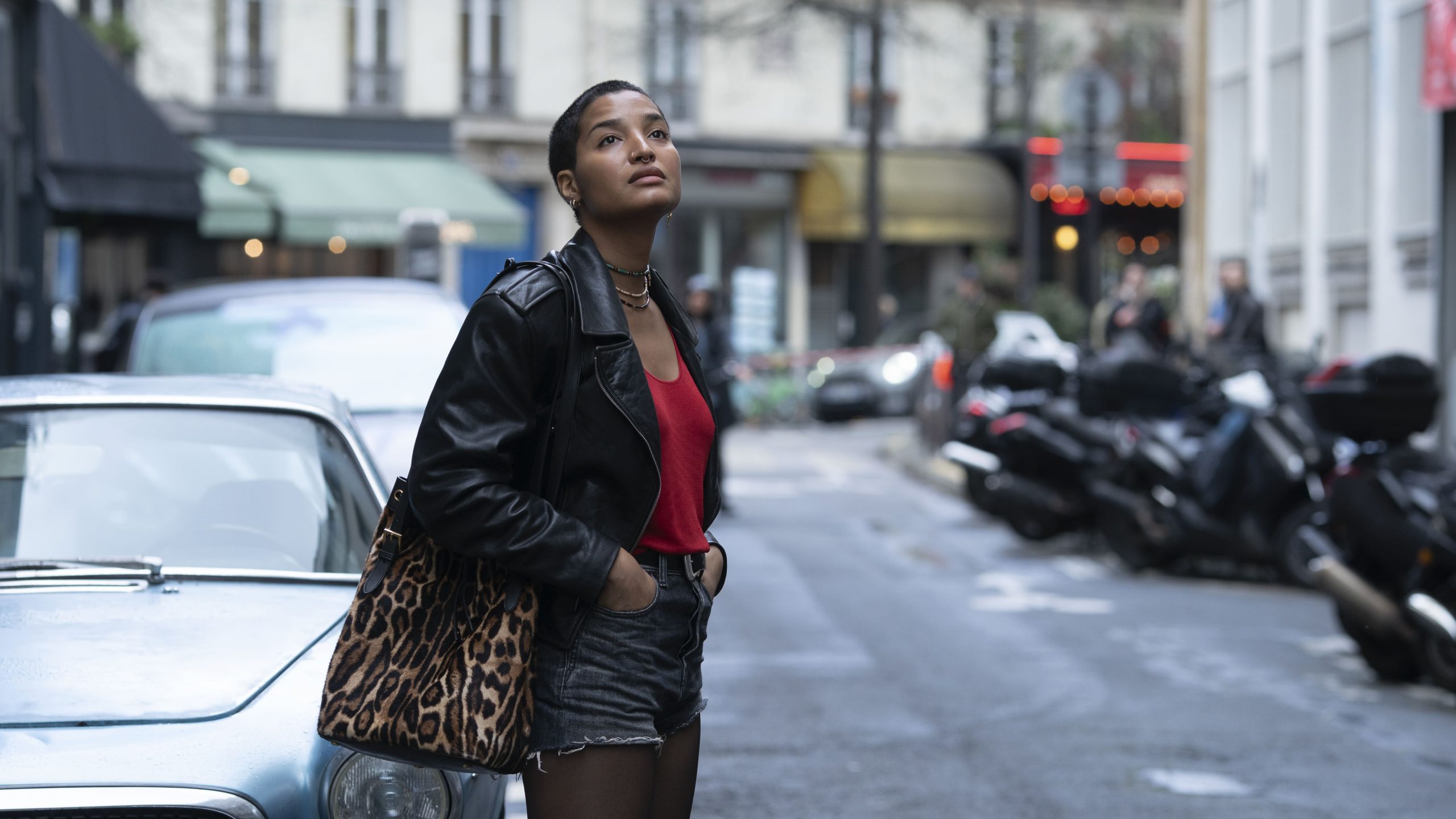
Since their breakthrough role in Ryan Murphy’s Pose, Indya Moore has been no stranger to making history both on the big screen and off it. Most recently, they became the first openly trans or non-binary actor to be nominated at the Gotham Awards in the lead or supporting categories.
“It happened because I had the opportunity,” Moore says of being recognized for their work in Jim Jarmusch’s newest indie, Father Mother Sister Brother. “It’s hard for me to receive the award of a nomination, but I really do appreciate it. It makes me feel like I’m growing in the right direction. It’s a very positive nod to keep working the way I did for this film.”
Jarmusch’s Father Mother Sister Brother, which won the top award at this year’s Venice Film Festival and is being distributed in the U.S. by MUBI (who released The Substance last year), is divided into three distinct chapters, exploring dysfunctional family dynamics. Moore appears in the last chapter, titled Sister Brother, alongside Luka Sabbat. The two play twins who reunite following the death of their parents, and must figure out how to move forward in their lives. The previous chapters feature Cate Blanchett, Adam Driver, Charlotte Rampling, Tom Waits, and Vicky Krieps.
Ahead of the film’s Christmas Eve release, Moore spoke with The Blade about working with Jarmusch for the first time on Father Mother Sister Brother, making history at the Gotham Awards, and why they remain active on social media and speak out about worldwide issues despite it complicating their “access to work.” This interview has been edited and condensed.
This film is your first with Jim Jarmusch. I’m curious how familiar you were with his work before, and how you got involved with the film?
I received an email about it, and then we spoke about it on the phone. It was really beautiful to be imagined as Skye and envisioned in the life of a character who is experiencing an aspect of being alive and being human that isn’t about persecution or hurt. I thought that was beautiful. These are the sorts of tones that I appreciate working with, the depths I always hope to find in this work. And I found that with Jim. I’m grateful it was him and that he chose me. I don’t know if it was even a choice for him because the way that he describes it is that these characters existed in his mind as me and Luka [Sabbat].
You appear after the first two chapters (titled Father and Mother), and the relationships between the characters there are much more strained and awkward, often comedically so. I love the tenderness Skye has with Billy in that final chapter. Could you speak to how the sibling relationship ties thematically into the film overall?
There is an interesting dynamic where it seems like the characters are different versions of each other — the parents and the siblings. And in each vignette, Skye is probably a mixture of all the previous siblings. And Billy is like the previous brother in a way. And also, the masking that the other characters seem to do is why the relationships all feel strained. They’re all hiding from each other, but they all love each other at the same time. They still all want to be there with each other, and it’s a really beautiful tension.
In the relationship between my character and Billy, there is more comfort in being together and seeing each other again — a gleefulness and joy that comes with being reunited. But the circumstances it happens with are overwhelmed with grief. Their relationship doesn’t seem that they’re masking. Like we see that Billy is experimenting with mushrooms, and so is Skye. The very nature of these medicines is to unmask. And so it’s a different perspective on what’s possible when people love and accept each other for who they are.
That’s really beautifully said. I don’t know if this is an explicitly queer film, but I think queer people might find unique connections with the dysfunctional family dynamics and how difficult that can be. As an openly queer person, are there ways you were able to specifically tap into some of the themes?
I think it’s very reflective of family dysfunction. Whether your kid is queer or just different in some funky, wacky way — kind of like Vicky Krieps’ character was. There’s always something about a person that others justify being cruel to and dominating, especially in sibling relationships. It’s really messed up. When we don’t learn to do that as kids with each other as siblings, we do that to each other as adults and become really oppressive people. We don’t understand other people’s autonomy and dignity, and it turns into all kinds of mistreatment and potentially persecution if you become somebody in a position of power and authority. Family is a really powerful opportunity for us to figure out who we’re going to be out in the world. We’re born to strangers, we’re born to random people, and end up having random siblings.
When you request that someone present their authentic self, you trust and believe them when they do. That should be synonymous with believing people when they tell you they’re queer, or they have a disability that they need to make boundaries around. Or if they’re a person of color, they come from a history of intergenerational trauma and persecution and genocide. How do you respond to that? Or someone else who may be part of a people who are being occupied and colonized right now. Without all these fancy political words, how do we empathize with people who are trying to survive cruelty? How do we find the wisdom and incentive to love people when you get nothing back in return for doing it? That is what the advancement and hard work actually is. In Father Mother Sister Brother, the narrative doesn’t get that deep, but it evokes that train of thought. It evokes that framework of thinking about relationships, and I appreciate the film for doing that.

This film won the Golden Lion at this year’s Venice Film Festival, and you recently made history at the Gotham Awards as the first openly trans nominee in the supporting or lead acting categories (Jack Haven was nominated for I Saw the TV Glow before they came out). What does that recognition mean to you?
Oh, well, that’s news to me. I didn’t know that I was the first trans nominee. I appreciate that acknowledgement. It happened because I had the opportunity. I don’t know how to think about it. It’s hard for me to receive the nomination, but I really do appreciate it. It makes me feel like I’m growing in the right direction. It’s a very positive nod to keep working the way I did for this film.
This year, you were also featured in Ponyboi, a great indie film that was notable for having a lead intersex character. What was your experience on that film? I wish it were getting more attention.
River Gallo is one of the most beloved people in my life. I love them so much, and I’m so proud. They wrote the film, sent it out, and got it made. That is phenomenal to me. They’re so brilliant, so loving, kind, generous, funny. Funny, oh my god! I had so much fun working with them. It was really fun to step into the complexity of my character, Charlie. She brought a meanness that does exist in some subcultures of the trans community. I loved supporting River and telling this story.
Talking about the state of the queer community and the world we’re living in, you have used social media as a real platform. Not just with what’s happening in the U.S., but Palestine and so many other issues. How do you approach using social media, especially as you’re getting more accolades and awards attention?
I know that it has complicated my access to work. It’s not incentivizing to go against the grain of this political suffocation that is taking everybody — children, women, trans and queer people, brown people, indigenous folks, and so many folks all over the world. There is an ushering in of some new world, some order that seems to be leaving behind a lot of suffering. Insurmountable suffering that we’ve never seen before. Nothing good comes out of that. Nothing good comes out of that ever. Nothing good comes out of separating people’s families. Nothing good comes out of lying to justify the exercise of power to do that. To cause suffering and terror, and then to call people who ask and demand for it to stop “terrorists.” I never imagined that we would live in a time where unarmed civilians are being called “terrorists” and are not allowed to fight against people who are hurting them, who are taking their homes and shelter and land, who are refusing to give up their only homes. Just for refusing to go homeless so that other people can have multiple homes and more wealth. What the fuck is that shit? Excuse my language. In the name of God, what are we looking at?
I stepped into the role of Angel in Pose during Donald Trump’s presidency [in 2018]. I have not had an opportunity to just be an artist who isn’t also having to take the extra step in engaging my audience that is unaffected with my audience that is. That is what my work has been. That is what I think the role of an artist is — to engage people with other people through your work. However, that instrument manifests as, be it a voice, a platform, or a creative medium. Being trans, being a person of color, and also feeling the weight of responsibility is deep work. And also being human. I have to use my platform to be a reminder of principles of how to treat each other, and also make sure that I’m maintaining that in my own life. And that’s hard. I’ve made mistakes too. When you have a platform, people romanticize you as a better version of themselves. They idolize you. So I’m constantly telling people to stop calling me a goddess. I’m not a queen. I’m a person just like you.
Truly, empathy is evolutionary, and we cannot replace it with machines. It’s not going to work, and we keep trying. And that’s why I’m trying to use my platform the best way that I can. I haven’t been as creative in my messaging; I’ve just been very direct and straight to it. I’m not even necessarily trying to be the voice for everything, but also sharing other people’s. But it’s exhausting. And now to be under the pressure of the anti-trans and anti-free speech stuff that is happening. If you don’t have a platform, you have a life. And that’s enough.
a&e features
Allison Reese’s advice? Take your comedic medicine.
Influencer, writer, comedian, and producer Allison Reese talks about the power of comedy, the news cycle, and her relationship with Kamala Harris.
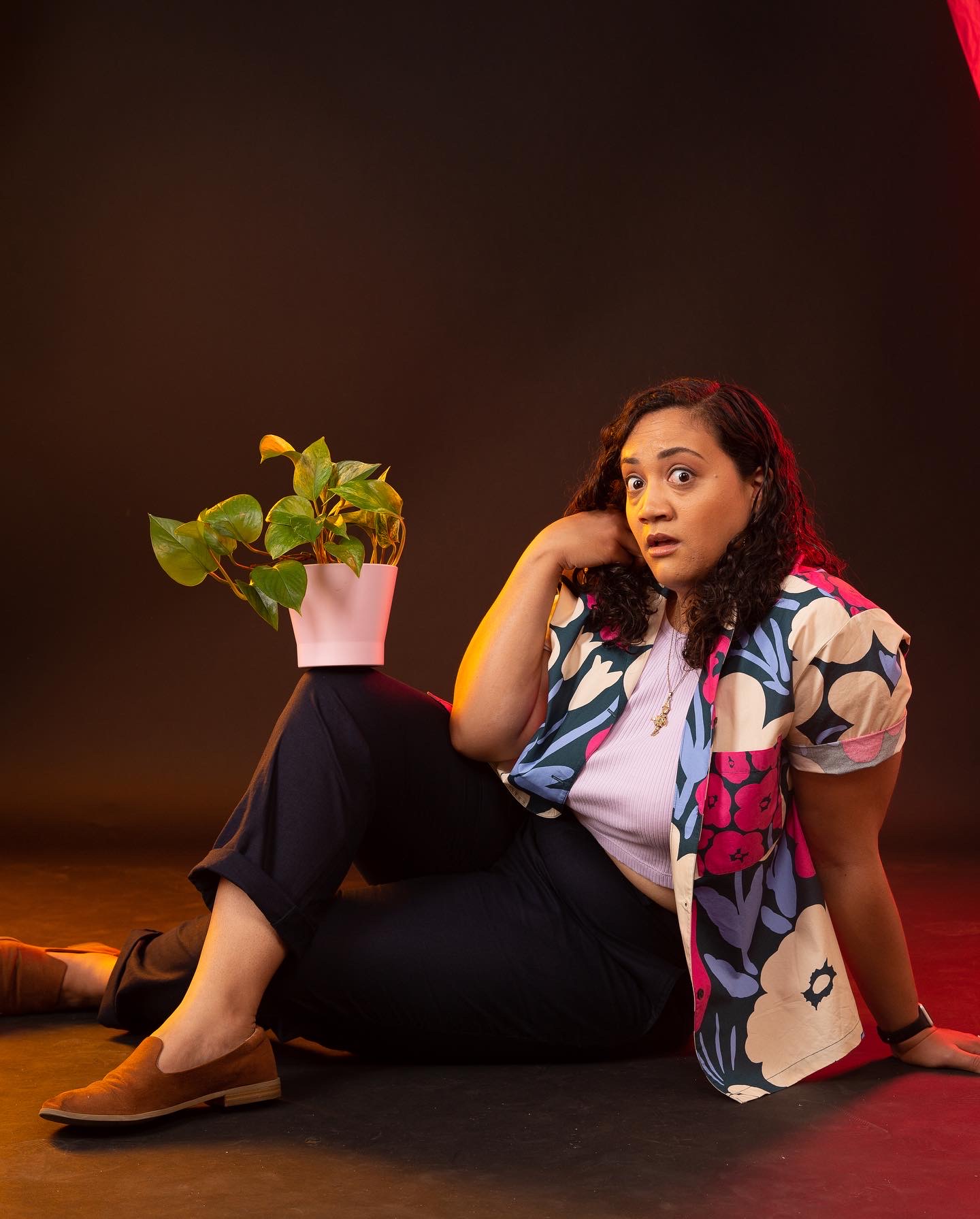
It’s often said that laughter is the best medicine. Comedian, writer, and producer Allison Reese reflects this as she has been helping her audience cope with the news cycle for years by doing various impressions of Kamala Harris on social media (which have received over 6 million likes on TikTok), through her past experiences on late-night television, and her stage appearances.
Allison has seen the positive impact of her videos and reflected on why she felt like so many people, especially those in the queer community, resonated with them. Allison shared with the Blade, “I like to think of it if I’m doing my Kamala impression, it’s like Kamala drag almost. It’s not so much just a character I do.”
Satire is something that many are using not only to digest the world around them, but it has also become a way for many to digest their news. Some people feel that the Last Week Tonight show is journalism despite John Oliver saying otherwise.
Allison stated, “As a comedian, it’s chemistry in a way. It’s like you have to have sugar to help the medicine go down, but you have to calculate how much sugar to how much medicine. Sometimes you need more medicine and a little bit of sugar. Sometimes you need a lot of sugar, because the medicine is so tough to swallow.”
While late-night shows still continue to pull in viewers, the dynamic of who people are listening to and watching is changing.
Late night is dominated by straight white men, with the exception of The Daily Show. Within the last year, late night programming has faced uncertainty with shows either being canceled or pulled off the air for a period of time.
The demand for more short-form content will continue to grow.
Allison shared, “I think the future of late night is going to be on social media. I think it’s not going to be peddled by these monolithic corporations to say, ‘Oh, you’re the right type of white guy to give me my jokey news’, you know?”
However, regardless of what the future holds, people will most likely find ways to remain optimistic when faced with tough information.
Allison understands this. Before moving to LA, she lived in New York during the middle of the pandemic and experienced the process of watching the city revive itself. “It ended up being really lovely doing stuff there as that city kind of woke up.”
One way that Allison plans on continuing to make us laugh is through releasing her new mockumentary-style web series, LGBT IDK, coming out in 2026.
Allison stated, “It follows me as I navigate the chaos of queer dating after a divorce. It’s fully improvised, and I am set up on these blind dates by my friend. And I get to date, and it’s just me with somebody who’s playing a larger-than-life comedic character.”
You can find it on her YouTube channel.
Books
‘Dogs of Venice’ looks at love lost and rediscovered
A solo holiday trip to Italy takes unexpected turn
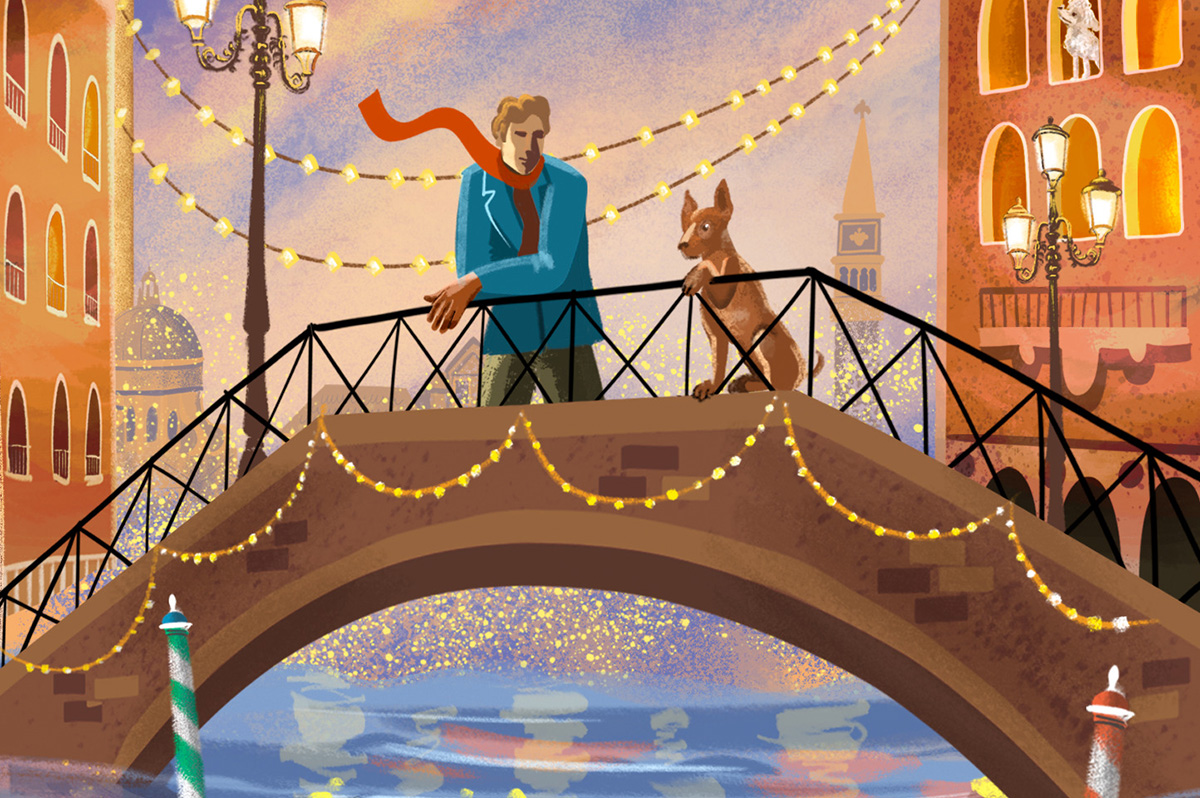
‘The Dogs of Venice’
By Steven Crowley
c.2025, G.P. Putnam & Sons
$20/65 pages
One person.
Two, 12, 20, you can still feel alone in a crowded room if it’s a place you don’t want to be. People say, though, that that’s no way to do the holidays; you’re supposed to Make Merry, even when your heart’s not in it. You’re supposed to feel happy, no matter what – even when, as in “The Dogs of Venice” by Steven Rowley, the Christmas tinsel seems tarnished.

Right up until the plane door closed, Paul held hope that Darren would decide to come on the vacation they’d planned for and saved for, for months.
Alas, Darren was a no-show, which was not really a surprise. Three weeks before the departure, he’d announced that their marriage wasn’t working for him anymore, and that he wanted a divorce. Paul had said he was going on the vacation anyhow. Why waste a perfectly good flight, or an already-booked B&B? He was going to Venice.
Darren just rolled his eyes.
Was that a metaphor for their entire marriage? Darren had always accused Paul of wanting too much. He indicated now that he felt stifled. Still, Darren’s unhappiness hit Paul broadside and so there was Paul, alone in a romantic Italian city, fighting with an espresso machine in a loft owned by someone who looked like a frozen-food spokeswoman.
He couldn’t speak or understand Italian very well. He didn’t know his way around, and he got lost often. But he felt anchored by a dog.
The dog – he liked to call it his dog – was a random stray, like so many others wandering around Venice unleashed, but this dog’s confidence and insouciant manner inspired Paul. If a dog could be like that, well, why couldn’t he?
He knew he wasn’t unlovable but solo holidays stunk and he hated his situation. Maybe the dog had a lesson to teach him: could you live a wonderful life without someone to watch out for, pet, and care for you?
Pick up “The Dogs of Venice,” and you might think to yourself that it won’t take long to read. At under 100 pages, you’d be right – which just gives you time to turn around and read it again. Because you’ll want to.
In the same way that you poke your tongue at a sore tooth, author Steven Rowley makes you want to remember what it’s like to be the victim of a dead romance. You can do it here safely because you simply know that Paul is too nice for it to last too long. No spoilers, though, except to say that this novel is about love – gone, resurrected, misdirected – and it unfolds in exactly the way you hope it will. All in a neat evening’s worth of reading. Perfect.
One thing to note: the Christmas setting is incidental and could just as well be any season, which means that this book is timely, no matter when you want it. So grab “The Dogs of Venice,” enjoy it twice with your book group, with your love, or read it alone.
The Blade may receive commissions from qualifying purchases made via this post.
Sports
LA County contributes over $181K to Out Athlete Fund for Pride House LA/West Hollywood
Pride House LA/West Hollywood is coming to L.A. County during the FIFA World Cup, 2028 Olympics, & more
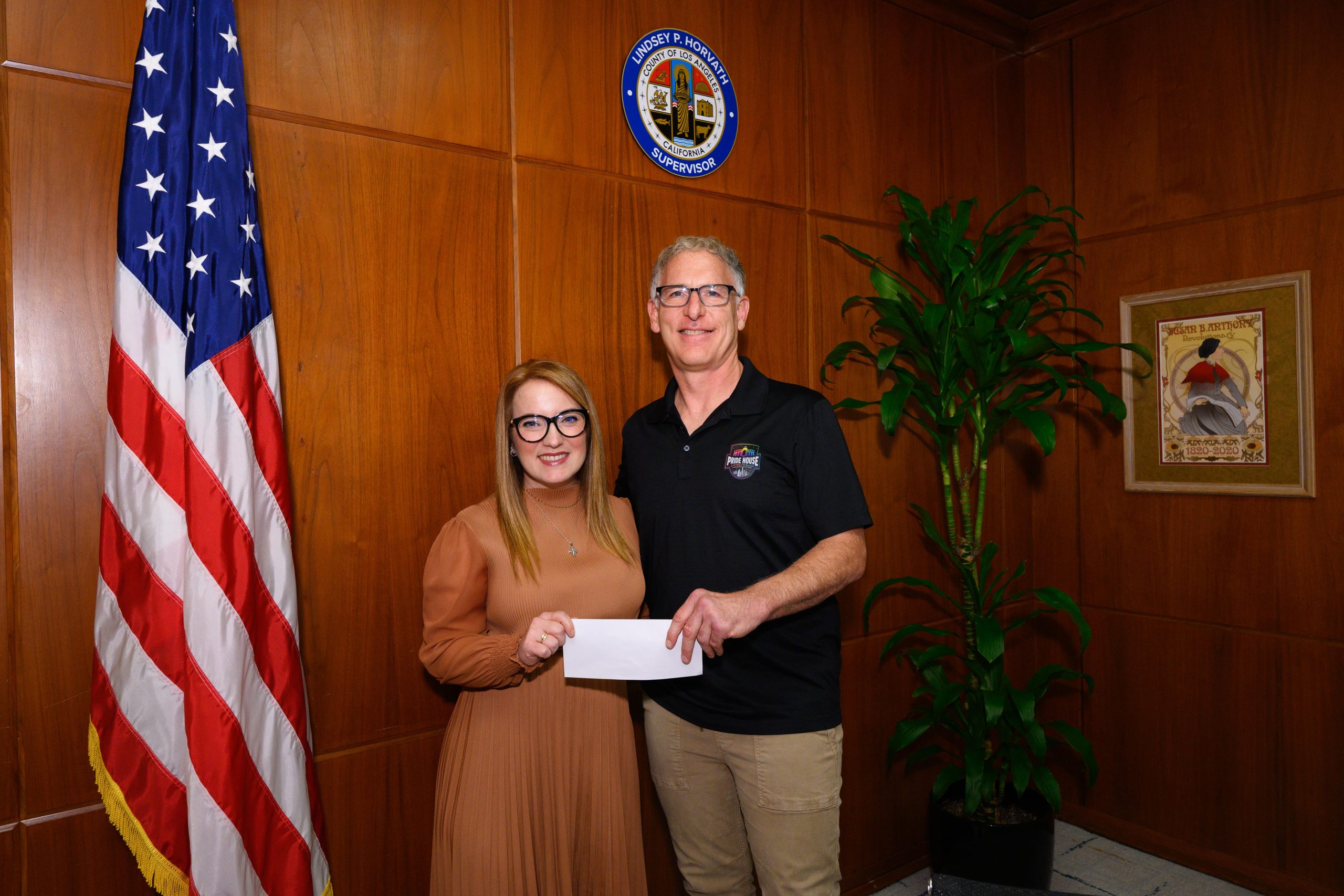
Hot off the heels of West Hollywood’s $1 million commitment to Pride House LA/West Hollywood, powered by the Out Athlete Fund, the County of Los Angeles has made a contribution of $181,200 for the development and production of events during the 2026 FIFA World Cup, the 2028 Summer Olympics and Paralympics, as well as other events throughout Los Angeles.
Pride House LA/West Hollywood will serve as the safe space and destination, transforming West Hollywood Park and the surrounding areas, set up to welcome LGBTQ+ fans, coaches, media, and athletes to the county. Pride House will present a series of events, including a highlight of the history of queer folk in sports, entertainment, and educational opportunities for the LGBTQ+ community, and outreach to allies celebrating the community.
Pride House LA/West Hollywood CEO Michael Ferrera shares, “Having support for Pride House from Los Angeles County Supervisor Lyndsey Horvath and people from across the County is a huge step toward delivering truly special experiences for the LGBTQ+ community at these
major sporting events here in Los Angeles.”
Los Angeles County Supervisor Lindsey P. Horvath remarked, “I am proud to support Pride House Los Angeles/West Hollywood as we prepare for the 2028 Games and work to ensure LGBTQ+ athletes are seen, supported, and celebrated at every level of sport. By expanding visibility, inclusion, and belonging, Pride House is strengthening both athletes and the broader sports community. Through its programming and community engagement leading up to 2028, we are helping build a lasting legacy of opportunity, representation, and support that extends well beyond the Games.”
The Out Athlete Fund is a non-profit organization committed to supporting out LGBTQ+ athletes on their journey to the Olympics and other national and international competitions. To donate and become a Founding Team Member, visit https://www.pridehouselaweho.org/donate.
Pride House LA/West Hollywood will take place in West Hollywood during the 2026 FIFA World Cup, June 11-14, and in West Hollywood Park, as well as select locations around Los Angeles County during the 2028 Los Angeles Summer Olympics, July 14-30, 2028.
The Los Angeles Blade serves as a proud media partner of Pride House/LA West Hollywood.
-
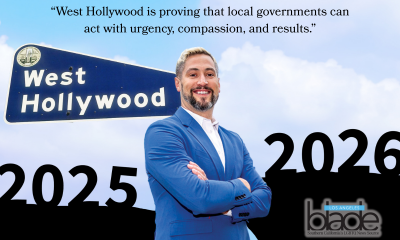
 Commentary5 days ago
Commentary5 days agoLooking back on ’25. Looking forward to ’26.
-
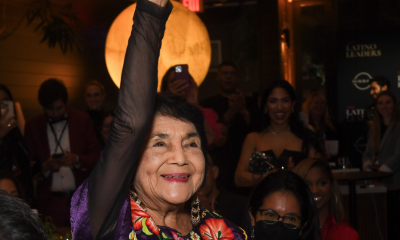
 Features4 days ago
Features4 days agoLegendary organizing activist Dolores Huerta, 95, rides in AHF’s ‘Food for Health’ Rose Parade float
-
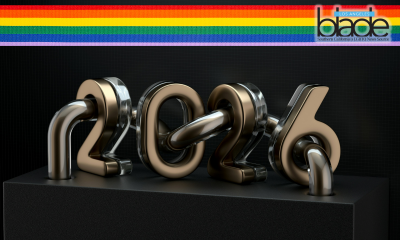
 Commentary4 days ago
Commentary4 days agoNew Year, New Queer: A polite reminder of the traditions that many of us make and many of us break that are well worth revisiting this particular year
-
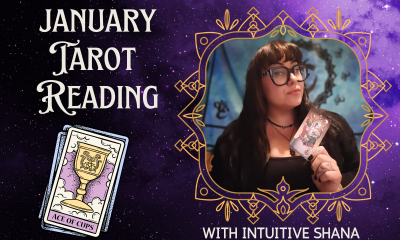
 Tarot Readings and Astrology3 days ago
Tarot Readings and Astrology3 days agoJanuary is calling for us to be grown-ups in Intuitive Shana’s New Year tarot reading
-
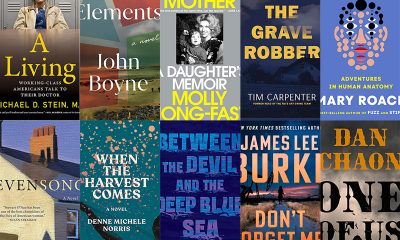
 Books2 days ago
Books2 days agoA look back at the best books of 2025
-

 Parks & Recreation5 days ago
Parks & Recreation5 days agoFor more than two decades, Los Angeles Neighborhood Land Trust has worked to address park inequities
-

 LGBTQ+ Youth Mental Health2 days ago
LGBTQ+ Youth Mental Health2 days agoLaw expanding mental health resources for LGBTQ+ youth has gone under effect
-
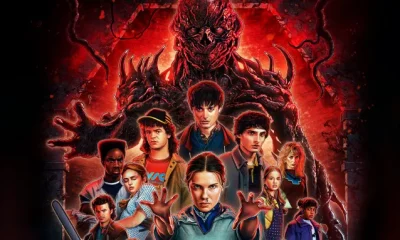
 Television21 hours ago
Television21 hours agoThe ‘Stranger Things’ coming out scene: The reaction and the relevance
